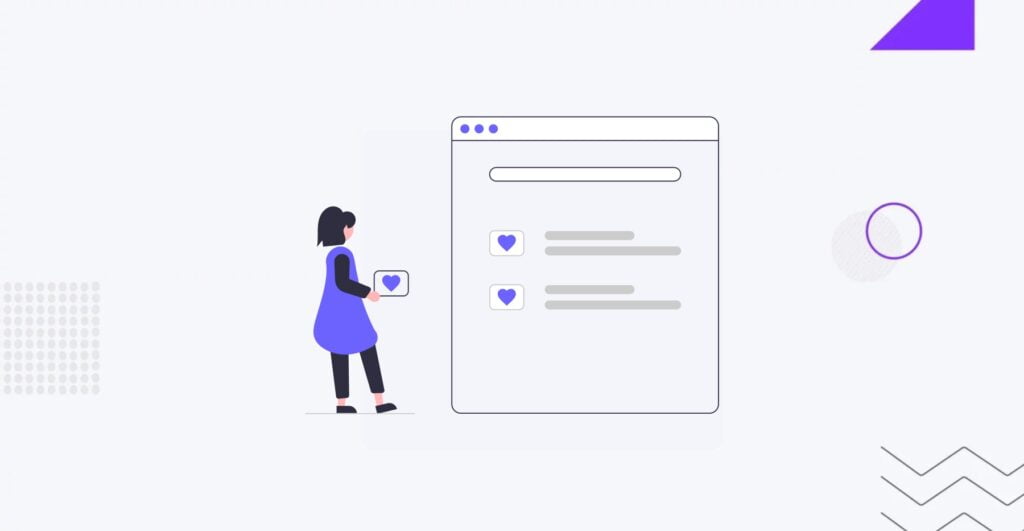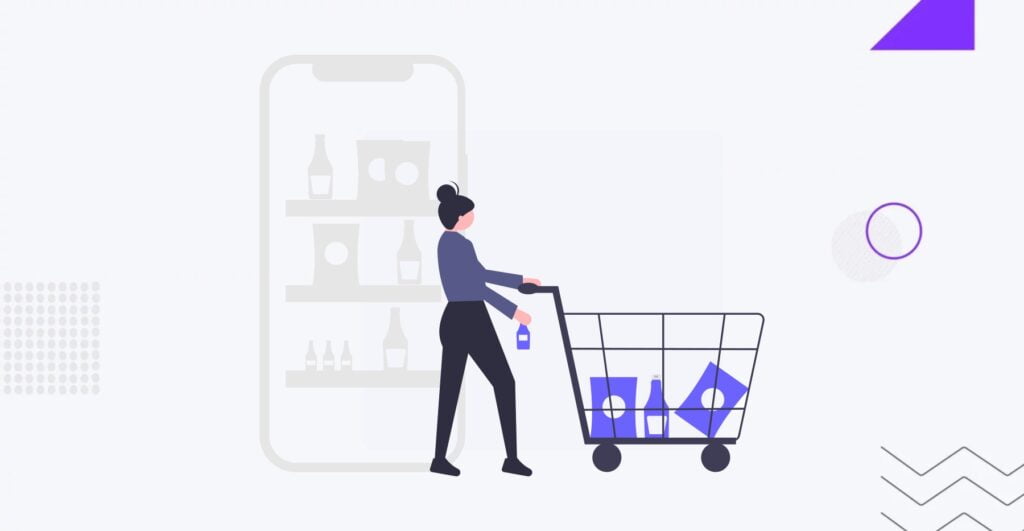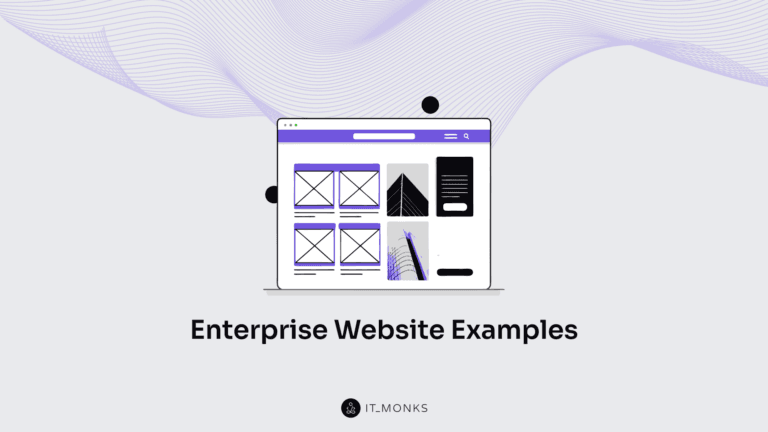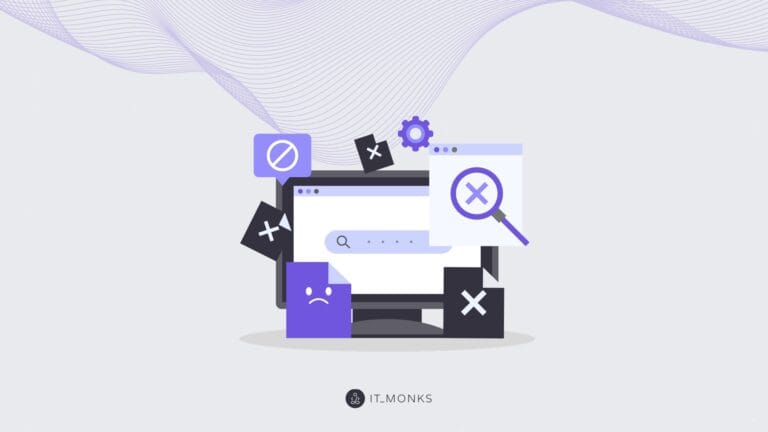The Importance of Sales Optimization in Ecommerce
Table of Contents
Table of Contents

How often have you wondered, “How to increase sales on an ecommerce website?” The competition is fierce in the ecommerce landscape, and consumer expectations continually evolve. To thrive in this environment, optimizing sales processes is not just a one-time effort but an ongoing necessity. This comprehensive guide will explore ways to increase ecommerce sales, providing detailed insights into each method to help you understand that every improvement is a complex set of actions requiring planning and time.
Driving Targeted Traffic to Your Ecommerce Website
One of the best ways to increase ecommerce sales is to attract the right audience to your website. To achieve this, you must employ strategies that target your ideal customers, attract them to your site, and engage them effectively. To begin with, consider implementing the following strategies to increase traffic to your ecommerce website and improve ecommerce sales.
Understanding Your Audience
Understanding your audience is one of the fundamental tips to increase ecommerce sales. Creating detailed customer personas helps you define and target specific segments of your audience effectively.
Customer personas are semi-fictional representations of your ideal customers based on market research and real data about your existing customers. They include demographic details, behavior patterns, motivations, and goals. By understanding who your customers are, what they need, and how they behave, you can tailor your marketing strategies to meet their specific needs. Consider trying the following methods for market research:
- Surveys and Questionnaires: Directly ask your customers about their preferences, challenges, and buying behaviors.
- Customer Interviews: Conduct one-on-one interviews with your customers to gain deeper insights.
- Focus Groups: Organize focus groups to gather diverse opinions and feedback.
- Social Media Listening: Monitor social media conversations to understand what your audience is discussing.
- Website Analytics: Use tools like Google Analytics to gather data on how visitors interact with your site.
- Customer Data Analysis: Analyze your data to identify patterns and trends. Look for common characteristics among your best customers, and use these insights to refine your marketing strategies. Segment your audience based on criteria such as age, location, purchasing behavior, and interests to deliver more personalized marketing messages.
SEO and Content Marketing
Search Engine Optimization (SEO) and content marketing are critical components of a successful ecommerce strategy. They help you attract organic traffic to your site and engage potential customers with valuable content.
SEO involves optimizing your website to rank higher in search engine results pages (SERPs). Higher rankings increase your visibility and drive more organic traffic to your site.
Identify the keywords your potential customers are using to search for products similar to yours. Use tools like Google Keyword Planner, SEMrush, and Ahrefs to find relevant keywords with high search volumes and low competition.
Create high-quality content that addresses your audience’s needs and interests. This could include blog posts, how-to guides, product reviews, etc. Ensure your content is well-researched, informative, and engaging.
Optimize your web pages for your target keywords. This includes using keywords in your page titles, meta descriptions, headers, and throughout your content. Also, ensure your website is mobile-friendly, has fast load times, and provides a good user experience.
Besides, consider including blogging and video content in your ecommerce sales strategy:
- Regularly publishing blog posts can help you target long-tail keywords, provide value to your audience, and establish your brand as an authority in your industry.
- Videos are highly engaging and can help you attract and retain visitors. Consider creating product demos, tutorials, customer testimonials, and behind-the-scenes videos.
Seeking expert SEO help?
Effective Use of Paid Advertising
Paid advertising allows you to reach a wider audience and drive targeted traffic to your ecommerce site. Different platforms offer various advertising options to suit your needs.
Some of the most popular paid advertising channels include:
- Google Ads: Allows you to target users based on their search queries. You can create text, display, and shopping ads that appear on Google’s search results pages and partner websites.
- Facebook Ads: Offers advanced targeting options based on demographics, interests, behaviors, and more. You can create image, video, carousel, and collection ads.
- Instagram Ads: Similar to Facebook Ads, Instagram Ads allow you to target users with visually appealing ads. You can create photo, video, carousel, and story ads.
To achieve the best results with paid advertising and increased sales in ecommerce, consider implementing such targeting strategies as:
- Demographic Targeting: Target users based on age, gender, location, and other demographic factors.
- Interest Targeting: Reach users based on their interests and hobbies.
- Behavioral Targeting: Target users based on their online behaviors, such as past purchases or website visits.
- Lookalike Audiences: Create audiences similar to your existing customers to reach new potential customers.
- Ad Creative: Your ad creative should be compelling and relevant to your audience. Use high-quality images or videos, write clear and persuasive copy, and include strong calls-to-action (CTAs). Test different creatives to see which ones perform best.
Track the performance of your ad campaigns using metrics such as click-through rate (CTR), conversion rate, cost per click (CPC), and return on ad spend (ROAS). Use this data to continuously optimize your campaigns, focusing on what works best and adjusting what doesn’t.
Converting Visitors into Customers

Attracting visitors to your ecommerce website is only half the battle. To increase sales on an ecommerce website, you need to convert those visitors into paying customers. This requires excellent UI/UX design, optimized product pages, and a seamless checkout process.
UI/UX for Ecommerce
A well-designed website ensures visitors can find what they’re looking for quickly and easily. Intuitive navigation reduces ecommerce bounce rate and helps customers navigate their shopping journey.
Slow websites frustrate users and can lead to high bounce rates. Studies show that even a one-second delay in page load time can significantly impact conversion rates. Optimize your website’s performance by compressing images, leveraging browser caching, and minimizing HTTP requests.
A significant portion of ecommerce traffic comes from mobile devices, so having a mobile-responsive site is crucial. Ensure that your website is easy to navigate on smaller screens, with touch-friendly buttons and a layout that adapts to various device sizes.
Here are several quick tips on how to increase ecommerce sales by improving the overall design:
- Visual Appeal: Use high-quality images and a clean design to make your site visually appealing. Consistent branding elements like colors and fonts help create a cohesive look.
- User-Friendly Interface: Ensure your interface is user-friendly, with clear categories and straightforward navigation menus.
- Minimalist Design: Avoid clutter by keeping your design simple. Highlight key products and promotions without overwhelming the user.
Need to design a store that converts?
Product Pages and Descriptions Optimization
High-converting product pages are detailed, visually appealing, and user-friendly, ensuring potential buyers have all the information they need to make a purchase decision. While working on the product page and description optimization, mind the following recommendations:
- Detailed Descriptions. Provide detailed descriptions covering all product aspects, including its features, specifications, and benefits. Highlight the unique selling points that set your product apart from competitors. Use engaging and persuasive language to capture the interest of potential buyers.
- High-Quality Images. Include multiple high-resolution images showing the product from different angles. This helps customers better understand what they are buying. Users can zoom in on images to see finer details. This is especially important for products where details matter, such as clothing or electronics. Use lifestyle images that show the product in use. This helps customers visualize how the product can fit into their own lives.
- Customer Reviews. Display customer reviews and ratings prominently on product pages. Positive reviews can significantly influence purchasing decisions. Ensure that reviews are genuine and, if possible, include customer photos to add authenticity. Respond to positive and negative reviews to show that you value customer feedback.
- Clear CTAs: Your calls-to-action (CTAs) should be prominent and straightforward, guiding customers to take the next step. Use action-oriented language like “Add to Cart,” “Buy Now,” or “Shop Now.”
For more detailed tips, check out our ecommerce product page optimization guide.
Simplifying the Checkout Process
A seamless checkout process is essential for minimizing cart abandonment and maximizing conversions. The easier you make it for customers to complete their purchase, the more likely they are to do so. Take the following steps to reduce friction in the checkout process and increase ecommerce revenue:
- Minimize Form Fields. Ask only for the information that is necessary to complete the purchase. Each additional field increases the chances of cart abandonment. Implement auto-fill options for returning customers to speed up the process.
- Guest Checkout. Allow customers to check out as guests without creating an account. This reduces barriers and makes the purchasing process faster and more convenient. Offer customers who wish to create an account after the purchase is complete the option to create one.
- Multiple Payment Options. Provide a variety of payment methods to cater to different customer preferences, including credit/debit cards, PayPal, Apple Pay, and other popular options. Ensure that all payment methods are secure and display trust signals to reassure customers.
Do not forget about trust signals. Displaying security badges and SSL certificates ensures customers that their personal and payment information is safe. Clearly communicating return and refund policies makes customers more confident returning items if necessary. Additionally, offering accessible customer support options, such as live chat, email, or phone support, helps address any questions or issues that arise during the checkout process.
Increasing Average Order Value

Boosting the average order value (AOV) is an effective strategy for everyone looking for tips on how to increase ecommerce revenue. By encouraging customers to spend more during each visit, you can maximize the profitability of your e-commerce store. Here are some key techniques for achieving this.
Upselling and cross-selling are powerful techniques that can significantly increase the AOV. Upselling encourages customers to purchase a more expensive version of the item they are considering, while cross-selling involves suggesting complementary products that enhance the primary purchase.
- Product Recommendations on Product Pages: Display related products or higher-end item versions on the product page. For example, “Customers who bought this also considered…” or “Upgrade to the premium model for enhanced features.” Use algorithms to suggest items based on customer behavior and purchase history.
- Bundled Offers: Create bundles of related products that provide added value at a discounted price. For example, a camera bundle that includes a lens, tripod, and memory card. Highlight the savings and convenience of buying the bundle compared to purchasing each item separately.
- Post-Purchase Upsell: After a customer adds an item to their cart or completes a purchase, offer a related product at a discounted rate. For example, “Add a protective case to your smartphone purchase for 10% off.” Use targeted email campaigns to suggest upgrades or complementary products based on previous purchases.
Want to boost ecommerce sales?
Offering Bundles and Discounts
Product bundling and discounts for larger orders can significantly boost sales by giving customers more value and incentivizing higher spending. Bundling products creates a perception of added value, making the combined offer more attractive than buying each item separately. Bundles simplify decision-making by offering a ready-made solution that meets multiple needs.
Offering discounts on larger orders incentivizes customers to buy more to reach the threshold. For example, “Spend $100 and get 10% off your entire order” or “Buy three items, get the fourth free.” Discounts can encourage customers to stock up on items or purchase in bulk, increasing the overall order value.
Examples:
- Holiday or Seasonal Bundles: Create special bundles during holidays or seasonal events, such as a “Back-to-School Bundle” with a backpack, notebooks, and stationery at a discounted price.
- Discount Tiers: Offer tiered discounts based on the order value. For example, “Get $10 off orders over $50, $20 off orders over $100, and $30 off orders over $150.”
Creating a Loyalty Program
Loyalty programs are designed to reward repeat customers and encourage them to continue purchasing from your store. By offering incentives for loyalty, you can increase customer retention, build brand loyalty, and boost customer lifetime value.
Let’s consider several examples of successful loyalty programs and how to implement them:
- Points-Based Programs. Customers earn points for every purchase, which can be redeemed for discounts, free products, or other rewards. For example, Sephora’s Beauty Insider program offers points that can be redeemed for exclusive products. (Ensure the points system is simple and transparent, and offer a range of redemption options to keep customers engaged.)
- Tiered Programs. Offer different levels of rewards based on customer spending or engagement. For example, Amazon Prime provides free shipping, exclusive deals, and access to streaming services for a yearly fee. (Create clear and achievable tiers to motivate customers to reach higher levels and enjoy better rewards.)
- Referral Programs. Encourage existing customers to refer new customers by offering rewards for both the referrer and the referee. For example, Dropbox offers additional storage space for every successful referral. (Make it easy for customers to refer friends and track their rewards, and offer compelling incentives that encourage sharing.)
Implementation Tips:
- Simple and Clear: Ensure your loyalty program is easy to understand and join. Clearly communicate the benefits and how customers can earn and redeem rewards.
- Attractive Rewards: Offer rewards that are genuinely valuable to your customers. This could include discounts, free products, early access to sales, or exclusive content.
- Track and Analyze: Use analytics to track the performance of your loyalty program. Monitor metrics such as enrollment rates, active participation, and the impact on repeat purchases to make data-driven improvements.
Reducing Cart Abandonment

Cart abandonment is a common challenge in ecommerce. Customers add items to their cart but leave the site before completing the purchase. Reducing cart abandonment can significantly boost conversion rates and overall revenue. Here’s how to address this issue effectively.
Common Causes of Cart Abandonment
Understanding why customers abandon their carts is crucial for developing strategies to mitigate this issue and learning how to increase sales on an ecommerce website. One of the primary reasons customers abandon their carts is unexpected costs. When customers proceed to checkout and encounter high or unanticipated shipping fees, additional taxes, or extra charges, they often hesitate and decide not to complete the purchase. These unforeseen costs can create a sense of mistrust and frustration, leading to cart abandonment.
Another significant factor is the complexity of the checkout process. Lengthy and cumbersome forms that require excessive information can be a major deterrent. Customers prefer a quick and straightforward checkout experience, and when faced with multiple steps or unnecessary fields, they are likely to abandon their carts. Additionally, forcing customers to create an account before purchasing can be a significant barrier. Many customers prefer the convenience of a guest checkout option and may leave the site if unavailable.
The lack of payment options also plays a crucial role in cart abandonment. Customers have diverse preferences regarding payment methods, and not offering various options can discourage them from completing their purchases. Moreover, concerns about payment security can also cause cart abandonment. If customers feel their payment information might not be secure, they will likely hesitate to provide their details and finalize the purchase.
Unclear return policies can further contribute to cart abandonment. Customers need reassurance that they can easily return or exchange items if necessary. If the return or refund policies are unclear or overly complicated, customers may decide against completing their purchase. Lastly, technical issues such as slow website performance, crashes, or bugs during checkout can frustrate customers and lead them to abandon their carts.
Need to reduce cart abandonment?
Cart Recovery Strategies
Recovering abandoned carts is essential if you want to boost ecommerce sales. Implementing effective cart recovery strategies can bring back potential customers who left without completing their purchases and encourage them to finalize their transactions.
One of the most effective ecommerce advice is sending email reminders to customers who have abandoned their carts. Automated cart abandonment emails can be sent shortly after customers leave the site, reminding them of the items left behind. These emails should be personalized to grab the customer’s attention, using their name and including images of the products in their cart. Additionally, the email should have a clear call-to-action (CTA) that directs them back to their cart to complete the purchase. Including a sense of urgency, such as “Hurry, your items are almost sold out!” can further motivate customers to return and finalize their transactions.
Retargeting ads are another powerful tool for recovering abandoned carts. These ads use cookies to track visitors who have left your site without making a purchase and display targeted ads on other platforms, such as Google and Facebook. Dynamic retargeting can show specific ads featuring the products that customers abandoned, reminding them of their interest and encouraging them to return to your site. By staying visible and reminding potential customers of their previous interests, retargeting ads can significantly increase the chances of conversion.
Exit-intent popups are also effective in reducing cart abandonment. These popups appear when a customer is about to leave the site, offering a last-minute reminder of the items in their cart or an incentive to complete the purchase. For example, an exit-intent popup might offer a limited-time discount or free shipping if the customer completes their purchase immediately. Additionally, these popups can be used to offer assistance, such as a chat option with customer support to address any questions or concerns that might be preventing the customer from completing their purchase.
Offering incentives is crucial for encouraging customers to complete their purchases. Discounts are a popular incentive that can effectively nudge customers toward finalizing their transactions. For instance, an email reminder or an exit-intent popup could offer a discount code like “Complete your purchase now and get 10% off!” Similarly, free shipping can be a powerful motivator, especially if high shipping costs were a factor in the initial abandonment. Highlighting offers such as “Free shipping on orders over $50” can make the difference in converting an abandoned cart into a sale. Limited-time offers create a sense of urgency, making customers feel they might miss out on a good deal if they do not act quickly.
Engaging Customers and Building Long-Term Relationships

Creating strong, long-lasting relationships with customers is crucial for the success of any ecommerce business. Effectively engaging customers can lead to increased customer loyalty, repeat purchases, and positive word-of-mouth referrals. Here are some key strategies for increasing sales on an ecommerce website through building long-term relationships with your customers.
Email Marketing for Engagement and Retention
Email marketing remains one of the most effective tools for engaging and retaining customers. By building and maintaining a robust WooCommerce email marketing list, segmenting your audience, and creating targeted email campaigns, you can keep your customers informed, engaged, and coming back for more.
Developing a robust email list is the foundation of a successful email marketing strategy. To build your list, offer sign-up incentives such as discounts, free shipping, or exclusive access to new products. Place sign-up forms strategically on your website, such as the homepage, blog, and checkout page, to capture visitor information.
Segment your email list based on customer behavior, preferences, and demographics to deliver personalized and relevant content. Segmentation allows you to target specific groups with tailored messages, increasing the likelihood of engagement and conversions. For instance, you can create segments for new customers, repeat buyers, or those interested in specific product categories.
Several useful tips on creating effective email campaigns:
- Welcome Sequences. Start with a welcome email sequence to introduce new subscribers to your brand. These emails should express gratitude for joining, provide an overview of your products, and offer a special discount or incentive to encourage the first purchase.
- Promotional Emails. Regularly send promotional emails featuring special offers, new arrivals, and seasonal sales. Ensure these emails are visually appealing, concise, and include a clear call-to-action (CTA).
- Post-Purchase Follow-Ups. After a customer makes a purchase, send follow-up emails to thank them, confirm their order, and provide shipping information. Additionally, include recommendations for related products and encourage them to leave a review.
Leveraging Social Media for Customer Engagement
Social media is a powerful tool for building and nurturing relationships with customers. It allows you to connect with your audience more personally, share your brand story, and create a community around your products and services.
- Building a Community. Social media platforms are powerful tools for building a community around your brand. They allow you to connect with customers personally, share your brand story, and foster a sense of belonging among your audience.
- Creating Engaging Content. Produce diverse and engaging content to keep your audience interested. This can include product highlights, behind-the-scenes looks, customer testimonials, and interactive posts such as polls and Q&A sessions. Visual content, such as photos and videos, tends to perform well on social media and can capture your audience’s attention.
- Interacting with Customers. Active engagement with your audience is crucial. Respond to comments, messages, and reviews promptly and thoughtfully. Show appreciation for positive feedback and address any concerns or complaints professionally. Engaging with customers in this way helps build trust and loyalty.
- Driving Traffic Back to Your Ecommerce Site. Use social media to drive traffic to your ecommerce site. Share links to blog posts, product pages, and special promotions. Utilize features such as Instagram Stories and Facebook Ads to highlight limited-time offers and new arrivals, encouraging followers to visit your site and purchase.
50 Impactful LinkedIn Algorithm Strategies
Discover 50 proven strategies to enhance your content, boost engagement, and expand your reach on LinkedIn.
Download our free PDF to gain actionable insights and take your LinkedIn presence to the next level.
Providing Exceptional Customer Service
Providing exceptional customer service is a cornerstone of building strong customer relationships. Responsive and helpful service ensures that customers feel valued and supported, leading to increased loyalty and repeat business.
Channels for Customer Service:
- Live Chat: Offer live chat support on your website to provide immediate assistance to customers. This can help resolve issues quickly and improve the overall shopping experience.
- Email Support: Ensure your email support is prompt and thorough. Respond clearly and helpfully to customer inquiries and follow up to ensure their issues are fully resolved.
- Social Media: Use social media platforms to offer customer support. Respond to questions and concerns raised in comments and direct messages. Publicly addressing issues can also demonstrate your commitment to customer satisfaction.
Measuring and Analyzing Performance

To ensure the success and growth of your ecommerce business, it is essential to measure and analyze your performance regularly. Tracking key metrics allows you to assess the effectiveness of your strategies, make data-driven decisions, and identify areas for improvement.
- Conversion Rate: The conversion rate is the percentage of visitors to your site who complete a desired action, such as purchasing. It is a critical metric for understanding how well your website and marketing efforts convert visitors into customers. A high conversion rate indicates that your site is effective at persuading visitors to buy, while a low conversion rate may suggest issues with your user experience, product pages, or checkout process.
- Average Order Value (AOV): The average order value measures the average amount customers spend per transaction. This metric helps you understand customer spending behavior and the effectiveness of your upselling and cross-selling strategies. Increasing the AOV can significantly boost your revenue without needing to attract more visitors.
- Customer Acquisition Cost (CAC): The total cost of acquiring a new customer, including marketing and sales expenses, is the CAC. Monitoring CAC helps you evaluate the efficiency of your marketing campaigns and determine if you are spending too much to gain new customers. Lowering your CAC while maintaining or increasing sales is crucial for profitability.
- Customer Lifetime Value (CLTV): Customer lifetime value represents the total revenue you can expect from a customer over their entire relationship with your business. This metric is vital for understanding the long-term value of your customers and the effectiveness of your retention strategies. Increasing CLTV involves enhancing customer satisfaction, encouraging repeat purchases, and building strong relationships.
- Assessing Effectiveness and Identifying Areas for Improvement: To assess the effectiveness of your strategies, compare these metrics against your goals and industry benchmarks. Regularly review your performance data to identify trends and patterns. For instance, if your conversion rate is low, investigate potential issues such as website usability, product page optimization, or marketing message alignment.
Conclusion
Increasing sales and building long-term customer relationships require a multifaceted approach. Ecommerce marketing goes beyond creating competitive products and services. You need to consider how customers interact with your website to develop a more effective ecommerce sales strategy. Your website’s design and usability should also be taken into consideration.
If you do not know how to build a web store that converts or need expert help to optimize your ecommerce website’s UI/UX, consider relying on the IT Monks team. We know how to increase sales on an ecommerce website, foster customer loyalty, and achieve long-term success. Contact us to learn more about our services and how we can help you boost your project.




